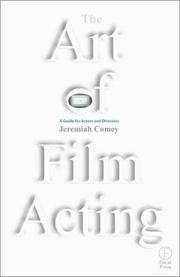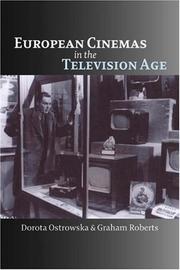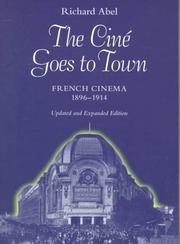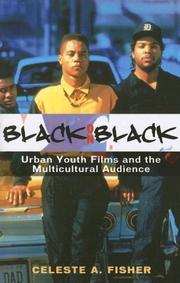| Listing 1 - 10 of 1792 | << page >> |
Sort by
|
Book
ISBN: 0838997333 9780838997338 Year: 2010 Publisher: Chicago American Library Association
Abstract | Keywords | Export | Availability | Bookmark
 Loading...
Loading...Choose an application
- Reference Manager
- EndNote
- RefWorks (Direct export to RefWorks)
Author and experienced mover Steven Carl Fortriede has everything you need to get the job done quickly and efficiently with step-by-step directions, diagrams, spreadsheets, and photos.
Libraries -- United States. --- Library moving -- United States. --- Library moving. --- Library moving --- Social Sciences --- Library & Information Science --- Libraries --- Moving of libraries --- Relocation of libraries --- Moving --- Relocation

ISBN: 1136047212 1136047220 1281005800 9786611005801 0080490506 9780080490502 0240805070 9780240805078 9781136047220 9781136047176 1136047174 9781136047213 9781138128927 1138128929 9781281005809 6611005803 Year: 2002 Publisher: Oxford Boston Focal Press
Abstract | Keywords | Export | Availability | Bookmark
 Loading...
Loading...Choose an application
- Reference Manager
- EndNote
- RefWorks (Direct export to RefWorks)
This guide for actors and directors develops a valid method for training performers to act from their core--whether they are cold reading, auditioning, or performing for film or television. This book teaches actors how to achieve and respond to believable and honest emotions before the camera, and it maintains that the key to a successful performance lies in how the actors relate to one another and to the circumstances. Exercises, including script examples, throughout the book give readers an easy resource for practicing the principles outlined.The Art of Film Ac
Motion picture acting. --- Film acting --- Moving-picture acting --- Acting
Book
ISBN: 0813560608 9780813560601 9781461934974 1461934974 9781299733640 1299733646 9780813560595 0813560594 9780813560588 0813560586 Year: 2013 Publisher: New Brunswick, N.J.
Abstract | Keywords | Export | Availability | Bookmark
 Loading...
Loading...Choose an application
- Reference Manager
- EndNote
- RefWorks (Direct export to RefWorks)
The Eyes Have It explores those rarified screen moments when viewers are confronted by sights that seem at once impossible and present, artificial and stimulating, illusory and definitive. Beginning with a penetrating study of five cornfield sequences-including The Wizard of Oz, Arizona Dream, and Signs-Murray Pomerance journeys through a vast array of cinematic moments, technical methods, and laborious collaborations from the 1930's to the 2000's to show how the viewer's experience of "reality" is put in context, challenged, and willfully engaged. Four meditations deal with "reality effects" from different philosophical and technical angles. "Vivid Rivals" assesses active participation and critical judgment in seeing effects with such works as Defiance, Cloverfield, Knowing, Thelma & Louise, and more. "The Two of Us" considers double placement and doubled experience with such films as The Prestige, Niagara, and A Stolen Life. "Being There" discusses cinematic performance and the problems of believability, highlighting such films as Gran Torino, The Manchurian Candidate, In Harm's Way, and other films. "Fairy Land" explores the art of scenic backing, focusing on the fictional world of Brigadoon, which borrows from both hard-edged realism and evocative landscape painting.
Realism in motion pictures. --- Realism in moving-pictures --- Motion pictures
Book
ISBN: 0813564972 9780813564975 9780813564968 9780813564951 0813564956 0813564964 9780813575179 Year: 2016 Publisher: New Brunswick, N.J. Rutgers University Press
Abstract | Keywords | Export | Availability | Bookmark
 Loading...
Loading...Choose an application
- Reference Manager
- EndNote
- RefWorks (Direct export to RefWorks)
There are hundreds of biographies of filmstars and dozens of scholarly works on acting in general. But what about the ephemeral yet indelible moments when, for a brief scene or even just a single shot, an actor's performance triggers a visceral response in the viewer? Moment of Action delves into the mysteries of screen performance, revealing both the acting techniques and the technical apparatuses that coalesce in an instant of cinematic alchemy to create movie gold. Considering a range of acting styles while examining films as varied as Bringing Up Baby, Psycho, The Red Shoes, Godzilla, and The Bourne Identity, Murray Pomerance traces the common dynamics that work to structure the complex relationship between the act of cinematic performance and its eventual perception. Mining the spaces where subjective and objective analyses merge, Pomerance offers both a deeply personal account of film viewership and a detailed examination of the intuitive gestures, orchestrated movements, and backstage maneuvers that go into creating those phenomenal moments onscreen. Moment of Action takes us on an innovative exploration of the nexus at which the actor's keen skills spark and kindle the audience's receptive energies.
Motion picture acting. --- Film acting --- Moving-picture acting --- Acting
Book
ISBN: 9780813566290 9780813566283 9780813566306 9780813575605 0813566304 0813575605 0813566290 0813566282 Year: 2016 Publisher: New Brunswick, New Jersey
Abstract | Keywords | Export | Availability | Bookmark
 Loading...
Loading...Choose an application
- Reference Manager
- EndNote
- RefWorks (Direct export to RefWorks)
Today's film scholars draw from a dizzying range of theoretical perspectives-they're just as likely to cite philosopher Gilles Deleuze as they are to "e classic film theorist André Bazin. To students first encountering them, these theoretical lenses for viewing film can seem exhilarating, but also overwhelming. Thinking in the Dark introduces readers to twenty-one key theorists whose work has made a great impact on film scholarship today, including Rudolf Arnheim, Sergei Eisenstein, Michel Foucault, Siegfried Kracauer, and Judith Butler. Rather than just discussing each theorist's ideas in the abstract, the book shows how those concepts might be applied when interpreting specific films by including an analysis of both a classic film and a contemporary one. It thus demonstrates how theory can help us better appreciate films from all eras and genres: from Hugo to Vertigo, from City Lights to Sunset Blvd., and from Young Mr. Lincoln to A.I. and Wall-E. The volume's contributors are all experts on their chosen theorist's work and, furthermore, are skilled at explaining that thinker's key ideas and terms to readers who are not yet familiar with them. Thinking in the Dark is not only a valuable resource for teachers and students of film, it's also a fun read, one that teaches us all how to view familiar films through new eyes. Theorists examined in this volume are: Rudolf Arnheim, Béla Balázs, Roland Barthes, André Bazin, Walter Benjamin, Judith Butler, Stanley Cavell, Michel Chion, Gilles Deleuze, Jean Douchet, Sergei Eisenstein, Jean Epstein, Michel Foucault, Siegfried Kracauer, Jacques Lacan, Vachel Lindsay, Christian Metz, Hugo Münsterberg, V. F. Perkins, Jacques Rancière, and Jean Rouch.
Film --- Motion pictures --- Film critics. --- Film criticism. --- Motion picture critics --- Moving-picture critics --- Critics --- Motion picture criticism --- Moving-picture criticism --- Criticism --- Philosophy. --- Evaluation

ISBN: 0748651128 9786610762484 1280762489 0748629947 9780748629947 9780748623099 0748623094 0748623086 0748623094 9780748623082 9780748651122 9781280762482 Year: 2007 Publisher: Edinburgh Edinburgh University Press
Abstract | Keywords | Export | Availability | Bookmark
 Loading...
Loading...Choose an application
- Reference Manager
- EndNote
- RefWorks (Direct export to RefWorks)
European Cinemas in the Television Age is a radical attempt to rethink the post-war history of European cinemas. The authors approach the subject from the perspective of television's impact on the culture of cinema's production, distribution, consumption and reception. Thus they indicate a new direction for the debate about the future of cinema in Europe. In every European country television has transformed economic, technological and aesthetic terms in which the process of cinema production had been conducted. Television's growing popularity has drastically reshaped cinema's audiences and for

ISBN: 0520912918 0585176337 9780520912915 9780585176338 0520079361 Year: 1998 Publisher: Berkeley University of California Press
Abstract | Keywords | Export | Availability | Bookmark
 Loading...
Loading...Choose an application
- Reference Manager
- EndNote
- RefWorks (Direct export to RefWorks)
Richard Abel's magisterial new book radically rewrites the history of French cinema between 1896 and 1914, particularly during the years when Pathé-Frères, the first major corporation in the new industry, led the world in film production and distribution. Based on extensive investigation of rare archival films and documents, and drawing on recent social and cultural histories of turn-of-the-century France and the United States, his book provides new insights into the earliest history of the cinema. Abel tells how early French film entertainment changed from a cinema of attractions to the narrative format that Hollywood would so successfully exploit. He describes the popular genres of the era--comic chases, trick films and féeries, historical and biblical stories, family melodramas and grand guignol tales, crime and detective films--and shows the shift from short subjects to feature-length films. Cinema venues evolved along with the films as live music, color effects, and other new exhibiting techniques and practices drew larger and larger audiences. Abel explores the ways these early films mapped significant differences in French social life, helping to produce thoroughly bourgeois citizens for Third Republic France. The Ciné Goes to Town recovers early French cinema's unique contribution to the development of the mass culture industry. As the one-hundredth anniversary of cinema approaches, this compelling demonstration of film's role in the formation of social and national identity will attract a wide audience of film scholars, social and cultural historians, and film enthusiasts.
Motion pictures --- Motion picture industry --- Silent films --- Film industry (Motion pictures) --- Moving-picture industry --- Cultural industries --- Moving pictures, Silent --- Silent motion pictures --- History. --- History and criticism.
Book
ISBN: 9789400691 9789789400690 9789780698287 9780698280 Year: 2014 Publisher: Ibadan : University Press Plc,
Abstract | Keywords | Export | Availability | Bookmark
 Loading...
Loading...Choose an application
- Reference Manager
- EndNote
- RefWorks (Direct export to RefWorks)
Book
ISBN: 144386787X 9781443867870 1322180563 9781322180564 9781443845915 Year: 2013 Publisher: Newcastle upon Tyne Cambridge Scholars Publishing
Abstract | Keywords | Export | Availability | Bookmark
 Loading...
Loading...Choose an application
- Reference Manager
- EndNote
- RefWorks (Direct export to RefWorks)
Is the legacy of the Neorealist film-making mode (or should we say mood?) a withered one? If not, what is the ideal dialogue between contemporary Italian directors and this momentous page of their cultural history all about? The aim of this book is to show that, far from being exhausted, the vivifying lymph of post-Second World War Italian Neorealism continues to sustain the aesthetic praxis of many artists. Predominantly, the staying power of Neorealism becomes apparent in the stringent mor...
Motion pictures --- Motion picture industry --- Realism in motion pictures. --- Realism in moving-pictures --- Film industry (Motion pictures) --- Moving-picture industry --- Cultural industries --- History.

ISBN: 1299396496 1461656885 9781461656883 0810857227 9780810857223 9781299396494 Year: 2006 Publisher: Lanham, Md. Scarecrow Press
Abstract | Keywords | Export | Availability | Bookmark
 Loading...
Loading...Choose an application
- Reference Manager
- EndNote
- RefWorks (Direct export to RefWorks)
Images of violent black masculinity are not new in American culture, but in the late 1980s and early '90s, the social and economic climate in the country contributed to an unprecedented number of films about ghetto life. And while Hollywood reaped financial gains from these depictions, the rest of the country saw an ever widening 'opportunity gap' between marginalized groups and mainstream society, as well as an increase in juvenile violence. These events added to the existing discomfort of the viewing public with representations of young black males living in urban ghettos.
| Listing 1 - 10 of 1792 | << page >> |
Sort by
|

 Search
Search Feedback
Feedback About UniCat
About UniCat  Help
Help News
News